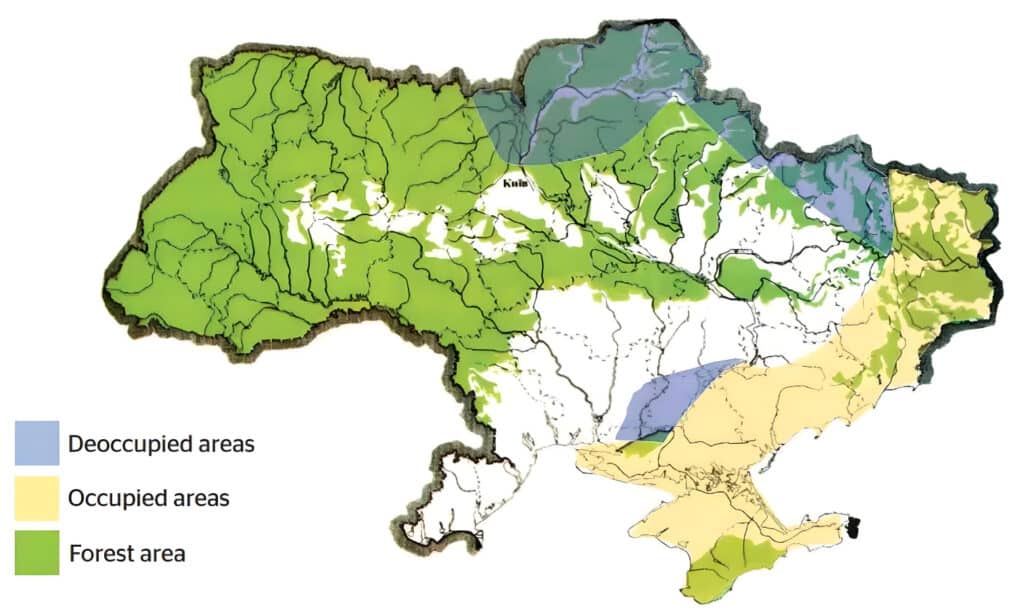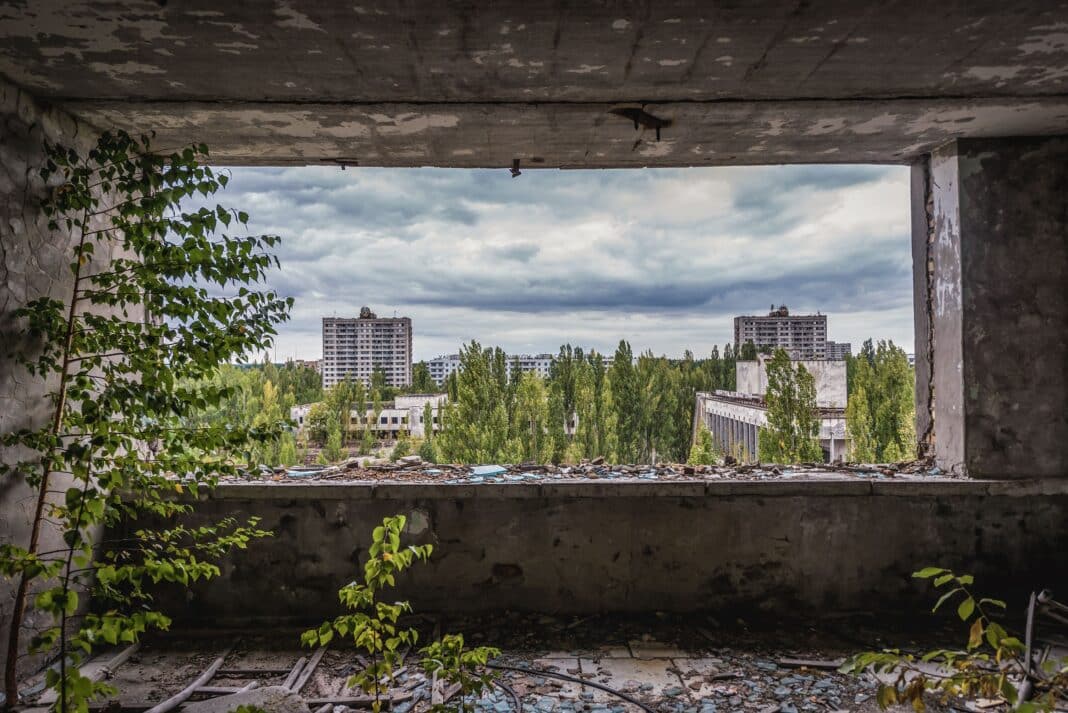Ukrainian crime syndicates are falsifying documents and selling deforested timber from within the Chornobyl exclusion zone, with syndicates converting the proceeds of crime into foreign currency, and using conflict and illegal logging to fuel an extensive criminal network.
It comes as Wood Central reported, back in September, that a top Ukrainian official was connected to the EU’s largest illegal pallet racket – with more than 100,000 cubic metres of Belarussian timber fraudulently sold into the European Pallet Association pool.
Now, Kyiv-based Ukrainian Independent Information Agency of News (UNN) has revealed a sophisticated crime ring involving accountants, businesses, and brokers has been laundering more than UAH 43 million worth of timber (AU $2 million) from the “Red Forest” – a protected forest within the 30km Chornobyl Radiation and Ecological Biosphere Reserve.
The latest heist adds to more than UAH 59 million (AU $2.3 million) damage to the forests, with gangs felling hundreds of 100-plus-year-old trees from the reserve and selling them illegally into the EU.
According to UNN, “the smugglers acted according to a well-developed criminal scheme,” adding that they “ordered the manufacture of timber products…and used falsified documentation to get customs clearance and ship the product into international markets.”
The reserve is the largest forest reserve in Ukraine – and almost 38 years after the nuclear disaster; it has become an unexpected haven for wildlife.
According to the UN, researchers found the land surrounding the plant, which has been largely off-limits to humans for almost four decades, has become a haven for wildlife, with lynx, bison, deer and other animals roaming forests.
The Chornobyl Exclusion Zone (CEZ), which covers 2,800 square kilometres of northern Ukraine, and represents the third-largest nature reserve in mainland Europe. Becoming an iconic – if accidental – experiment in rewilding.
In 2020 Sergiy Zibtsev, a forestry expert at the National University of Life and Environmental Sciences of Ukraine, told the UN Environmental Programme that it was ironic that a nuclear accident had created a richer forest ecosystem.
“The pine plantations in 1986 have given way to more biodiverse primary forests, which are more resilient to climate change and wildfires and better able to sequester carbon.”

Since then, the area has been subject to extensive fires in 2020, destroying 62,000 hectares of forests and “scorched earth” fighting between Ukrainian and Russian forces, which destroyed critical infrastructure in and around the exclusion zone.
More than 3.5 million hectares of Ukrainian forests have been damaged and destroyed from combat since the start of the war, with officials now working with US tech mogul Peter Thiel to use AI-powered drones to demine large swathes of forests.
- To learn more about the Ukraine war and its impact on the global forest economy, please review Wood Central’s special feature.







